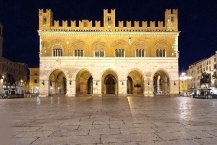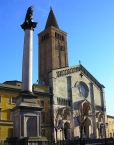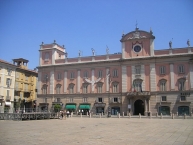Cycle Tour Francigena - Home2Rome
Planned tour: From my House to Rome
Actions
![]()
Please wait - map data are loading
Added on 27 Mar 2020,
last edited by agocurti on 05 Apr 2020
Actions
Cycle route metrics
planned
ridden
Total distance in km
842
0
Cumulative elevation gain in m
14.572
0
Avg. slope uphill in %
1,73
-
Cumulative elevation loss in m
14.818
0
Information about rights to the gps-track data | |
|---|---|
Rights owner | |
Rights characteristic / license | cc0: Public Domain no Rights reserved |
Link to the description of the license | |
GPX file uploaded | by agocurti on 05 Apr 2020
|
Track points in total
14.864
0
Track points per km (avg)
18
0
Start/endpoint
Start location
Gravedona ed Uniti, Lombardy, IT (268 m NHN)
End location
Rome, Lazio, IT (21 m NHN)
Beds4Cyclists, worth visiting and infrastructure
Name and address
Latitude / Longitude
Phone
Fax
Mobile
Type of accommodation
Rating for cyclists
Route km
Dist. to route
Elevation
24 km
3,1 km
856 m
165 km
0,3 km
60 m
165 km
0,2 km
53 m
166 km
0,0 km
65 m
Information about copyright | |
|---|---|
Rights owner | |
Rights characteristic / license | by-sa: CREATIVE COMMONS Attribution-ShareAlike |
Link to the description of the license | |
Image taken over from | |
Image has been uploaded | by biroto-Redaktion on 04 Mar 2014
|
Information about copyright | |
|---|---|
Rights owner | |
Rights characteristic / license | by-sa: CREATIVE COMMONS Attribution-ShareAlike |
Link to the description of the license | |
Image taken over from | |
Image has been uploaded | by biroto-Redaktion on 04 Mar 2014
|
Information about copyright | |
|---|---|
Rights owner | |
Rights characteristic / license | by-sa: CREATIVE COMMONS Attribution-ShareAlike |
Link to the description of the license | |
Image taken over from | |
Image has been uploaded | by biroto-Redaktion on 04 Mar 2014
|
Main sights
Piacenza boasts a great number of historical palaces, often characterized by splendid gardens.
Palaces
- ⊙Palazzo Comunale, also known as il Gotico, was built in 1281 as the seat of the government of the town. It is one of the best preserved examples of the kind of Medieval civic building in northern Italy known as the Broletto
, and is typical of nearby Lombardy. Of the original design, only the northern side was completed, with its typical Guelph merlons, the arcaded frame, the central bell tower with two lesser ones at the sides. The façade, with five arcades, is in pink marble in the lower part and in brickwork (decorated with geometrical figures) in the upper part. A rose window overlooks the short side, which has three arcades. The main hall has frescoes, and is used for meetings, lectures and conferences.
- ⊙ Palazzo Farnese
, begun in 1568 by Ottavio Farnese and his wife,Margaret of Austria. The initial project was devised by Francesco Paciotto, from Urbino, and works were entrusted to Giovanni Bernardo Della Valle, Giovanni Lavezzari and Bernardo Panizzari (Caramosino). The design was modified in 1568 byJacopo Barozzi, better known as Vignola.
- Palazzo Landi, built in the Middle Ages but renovated in the late 15th century.
- ⊙Palazzo Costa.
- Palazzo Somaglia.
- ⊙Palazzo Scotti, housing the Museum of Natural History.
- ⊙Palazzo dei Mercanti (17th century), the current Town Hall.
Other places of interest
- ⊙Piazza Cavalli is the main square of the town. It is named ("Cavalli" means "horses") for the two bronze equestrian monuments of Alessandro Farnese (Duke of Parma and Piacenza from 1586, nephew and valiant general of Philip II of Spain) and his sonRanuccio, who succeeded him to the dukedom. The statues are masterpieces of Francesco Mochi, a Mannerist sculptor.
- ⊙ The Duomo di Piacenza
is the Catholic cathedral of thediocese of Piacenza-Bobbio. It was built from 1122 to 1233 and is one of the most valuable examples of a Romanesque cathedral in northern Italy. The façade, in Veronese pink marble and gilted stone, is horizontally parted by a gallery that dominates the three gates, decorated with capitals and Romanic statues. The interior has a nave and two aisles, divided by 25 large pillars. It has noteworthy frescoes, made in the 14th-16th centuries by Camillo Procaccini and Ludovico Carracci, while those of the dome are by Morazzone and Guercino. The presbytery as a wooden sculpture from 1479, a wooden choir by Giangiacomo da Genova (1471) and statues of Lombard school from the 15th century. The crypt, on the Greek cross plan, has 108 Romanesque small columns and is home to the relics of Saint Justine, to which the first cathedral (crumbled down in 1117 after an earthquake) was dedicated.
- ⊙ The church of St. Francis, in Piazza Cavalli, is a 12th-century Romanesque/Gothic edifice which, thanks to its central position, assumed the role of civic Sanctuary in the Middle Ages. Part of the ancient cloisters remains. The main gate is enriched by a big lunette of the 15th century representing the Ecstasy of St. Francis. The interior, with nave and two aisles divided by low and strong brick pillars that support high gothic arches, has a Latin Cross scheme. The nave, higher than the aisles, has a pentahedric apse in which the aisle apses meet; decorations include 15th-16th centuries frescoes. In the church was proclaimed the annexion of Piacenza to the Kingdom of Sardinia in 1848.
- ⊙ The basilica of Sant'Antonino is an example of Romanesque architecture, characterized by a large octagonal tower. It was commissioned by St. Victor, first bishop of the city, in 350 CE, and completed in 375. It contains the relics of the eponymous saint, martyred near Travo, in the Val Trebbia. In 1183 the delegates of Frederick Barbarossa and of the Lombard League met here for the preliminaries of peace of Constance. The church was renovated after damage created by the barbarian invasion, and has a 15th-century cloister. In the interior, the main artworks are the frescoes byCamillo Gervasetti (1622).
- ⊙ The basilica of San Savino, dedicated to St. Victor's successor, was begun in 903 but consecrated only in 1107. The façade and the portico are from the 17th-18th centuries. The presbytery and the crypts contain 12th century polychrome mosaics. The interior is in Lombard-Gothic style, with anthropomorphic capitals of the columns. Over the high altar is a 12th-century wooden crucifix by an unknown artist.
- San Giovanni in Canale was founded by the Dominicans in 1220, and enlarged in the mid-16th century.
- Santa Maria in Campagna, a Renaissance church, faces Piazzale delle Crociate ("Crusades Square"), so called because Pope Urban II summoned the First Crusade here in 1095. The church was built in 1522–1528 to house a miraculous wooden sculpture of the Madonna. The interior was originally on the Greek cross plan, but was later turned into a Latin cross one. Il Pordenone finished fine frescoes in the dome and in two chapels on the left side.
- St. Sixtus is a Renaissance church with a choir designed by Gio Pietro Pambianco da Colorno e di Bartolomeo da Busseto (1512-1514). It was begun in the 15th century over a temple built in 874 by Empress Angilberga. Also by Tramello is the Church of the Holy Sepulchre. In 1513, the monks of St. Sixtus commissioned Raphael to produce the altarpiece known as the Sistine Madonna. They sold it in 1754 to Augustus III of Poland.
- The Piacenza's Archaeological Museum, part of the Civic Museums of Palazzo Farnese, houses the pre-Roman bronze Liver of Piacenza
, an Etruscan bronze model of a sheep's liver dating from the end of the 2nd century to the beginning of the 1st century BCE. It was discovered in 1877 in Ciavernasco di Settima, near Gossolengo in the Piacenza hinterland. Containing writing on its surface delineating the various parts of the liver and their significance, it was likely used as an educational tool for students studying haruspicy, or divination.
- Palazzo Landi, built in the Middle Ages but rebuilt in the current form in the 15th century by Lombard craftsmen. It has a Renaissance marble portal. It is now seat of the local Tribunal.
- Ricci Oddi Gallery is an art-gallery dedicated to modern Italian painters.
Information about copyright | |
|---|---|
Rights characteristic / license | by-sa: CREATIVE COMMONS Attribution-ShareAlike |
Link to the description of the license | |
Input taken over from: |
Wikipedia contributors, 'Piacenza', Wikipedia, The Free Encyclopedia, 25 February 2014, 19:03 UTC, <http://en.wikipedia.org/w/index.php?title=Piacenza&oldid=597107589> [accessed 4 March 2014] |
taken over / edited on | 04 Mar 2014 - 15 Sep 2016
|
taken over / edited by |
|
166 km
0,2 km
69 m
![]()



